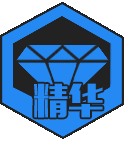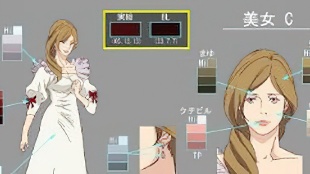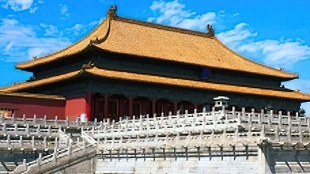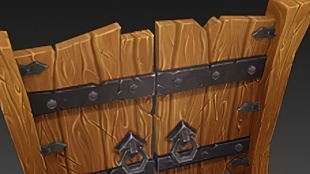资产生产非常简单,过程非常简单。几乎所有的资产都非常简单,没有什么花哨或复杂的。他们遵循简单的建模实践。我在我觉得有必要的地方使用过面部加权正常。与传统的高多边形到低多边形工作流程相比,它节省了大量时间。墙壁只是简单的模块化资产,Texel密度设置为10.24px / m
我还依靠Megascans和市场资产来节省一些时间。对每一个道具进行建模并创建每一个纹理只会消耗大量的时间和精力,而这些时间和精力本来可以在其他地方使用。我想把精力花在灯光,情绪,布景着装上,获得整体方法。我想用填充物道具填充我的场景,如啤酒瓶,罐头,贴花,薯条包。我找到了一个惊人的包,给了我我需要的道具。我认为当你独自工作时使用这些是完全可以的。
I have also relied on Megascans and marketplace assets to save some time. Modelling every single prop and creating every single texture just consumes a lot of time and energy which could be used somewhere else. I wanted to spend my energy on lighting, mood, set dressing, getting the holistic approach. I wanted to populate my scene with filler props like beer bottles, cans, decals, chips packets. I found an amazing pack that gave me the props I needed. I think it’s perfectly fine to use these when you’re working alone.
纹理过程也非常简单。所有的道具都有独特的纹理。墙壁和地板使用Megascans的瓷砖。
在制作纹理道具时,我从基础材料开始,然后添加独特的细节。在纹理制作时,我首先创建宏/更大的细节,因为它完成了50%的工作,这给了纹理的第一次传递。稍后,当您在项目中继续前进时,您始终可以返回并添加越来越多的详细信息。我认为在创造环境的同时保持一致并继续前进非常重要。
Texturing process was pretty straightforward too. All the props have unique textures. Walls and floor use tileables from Megascans.
While texturing props I start off with base materials and then add in the unique details. While texturing I start with creating the macro/bigger details first as it does 50% of the job, this gives the 1st pass to the textures. Later as you move ahead in project you can always go back and add more and more details. I think it’s important to stay consistent and keep on moving while creating an environment.
对于角落和边缘,我想再现概念的类似感觉。泄漏,裂缝只是Megascans和 textures.com 上的贴花。地板上的湿润区域实际上是血迹贴花!我只是改变了颜色和粗糙度值,使它看起来像水!由于渗漏,石膏变得片状。我通过顶点绘画在着色器中实现了这种效果。
在Megascans中找到基础材料后,我将它们混合在我自己的着色器中。
第一个是干净的石膏墙,第二个是发霉的墙和第三个片状油漆天花板。
MF 表示材质函数。这些就像一个群体。因此,我没有将 3 种不同材质的所有纹理都放在一个图形中,而是将它们分组为 3 个材质函数。
MF 1和MF2由世界对齐的蒙版混合,我可以控制它的平铺,对比度和不透明度。MF3通过顶点绘画(R)通道与这2个混合。在某些地方,我需要表现出湿润。这是通过顶点绘画(G)通道完成的。初始输出的基色乘以颜色,并插入到最终材质属性的输入中。粗糙度,以同样的方式,与初始输入一起被勒索。它们都有绿色的顶点画通道作为阿尔法。
For the corners and edges, I wanted to reproduce the similar feeling of the concept. Leakages, cracks are just the deals found on Megascans and textures.com. The wet areas on the floor are actually the bloodstains decal! I just changed the colors and roughness value to make it look like water! Due to the leakages, the plaster turns flaky. I achieved this effect in the shader by vertex painting.
After finding the base materials in Megascans I blended them together in my own shader.
1st one being a clean plaster wall, 2nd Moldy wall and 3rd Flaked paint ceiling.
MF represents material functions. These are like a group. So instead of having all the textures of 3 different materials in a single graph, I grouped them into 3 Material functions.
MF 1 and MF2 is blended by a world-aligned mask, I can control the tiling, contrast and opacity of it. MF3 blends with these 2 via vertex painting(R) channel. In some areas, I needed to show wetness. This was done by vertex painting (G) channel. The base color from the initial output is multiplied by color and plugged into the input of the final material attribute. Roughness, in the same way, is lerped with the initial input. Both of them have green channel of vertex paint as alpha.
This helped me to achieve the look I was going for. In the same way, the floor was blended with 2 materials and the rest was done via decals.
Coming to posters I really wanted to add in the detail of being torn from the sides, over the course of time it has peeled from certain places. Here I decided to model the mesh itself and then paint out the torn part via opacity in substance painter.
在环境方面,这是我最喜欢的部分。我相信道具在场景中的放置方式可以说明很多故事。它为环境提供了一个背景故事。它回答了5W的谁,什么,何时,何地和为什么?
如果这个地方非常破旧,不整洁,到处都是垃圾,它会弹出一些问题,比如那里发生了什么?这个地方荒芜了一段时间了吗?它没有维护吗?
如果有破损的家具,是否有战斗在进行?发生了爆炸吗?
它赋予了环境急需的个性。
我在Artstaion上看了很多2区的作品。他们有惊人的布景敷料和支撑。
在我的场景中,我想表明在这个房间里操作的人并不关心维护这个地方。墙壁和地板随着时间的流逝而积聚了灰尘和污垢。房间的角落是大部分垃圾堆积的地方。家具附近的接触污垢表明它已经存在了很长时间。墙壁石膏已从某些地方剥落,表明加班潮湿。墙壁已经从顶部开裂。所有的泄漏和裂缝都是通过多个贴花完成的。
在特定地区工作时,我们确保在附近拥有一切。香烟盒,茶杯,可乐罐,食品包,所有东西都在他的办公桌附近,不在乎把它扔掉。为数不多的香烟是开箱即用的,他甚至把它们灰在桌子上。海报已经从侧面撕裂和剥离。水从门后流进房间,角色最近走过它,微妙的脚印帮助我实现了这种感觉。破碎的网状围栏,底部的布料,躺着的罐头,纸板箱,啤酒瓶,倒在地上的桌子只是增加了令人不安的氛围。
这些是销售整个环境的真正小细节。
This is my favorite part when it comes to environments. I believe the way props are placed in a scene tells a lot of stories. It gives the environment a back story. It answers the 5W’s Who, What, When, Where and Why?
If the place is extremely shabby, untidy, has trash everywhere it pops up questions like what has happened there? Has this place been deserted for some time? Was it not maintained?
If there is broken furniture was there a fight going on? Was there an explosion that took place?
It gives the environment a much-needed personality.
I looked at a lot of division 2 artworks on Artstaion. They have amazing set dressing and propping.
In my scene, I wanted to show that the person operating in this room doesn’t care about maintaining the place. The walls and floors have accumulated dust and gunk overtime. The corners of the room is where most of the trash has accumulated. The contact dirt near the furniture shows that it has been there for a long time. The wall plaster has peeled off from certain places indicating the wetness overtime. The walls have cracked away from the top. All the leakages and cracks were done via multiple decals.
While working in a specific area we make sure to have everything in the vicinity. Cigarette boxes, teacup, cola cans, food packets, everything is near his desk and doesn’t care to throw it away. The few cigarettes are out of the box, he even ashes them on the table. The posters have torn and peeled away from the sides. The water is flowing in the room from behind the door and the character has recently walked over it and subtle footprints helped me to achieve that feeling. The broken mesh fence, cloth at the bottom, lying cans, cardboard boxes, beer bottles, fallen table on the ground just adds to the disturbing vibe.
These are the really small details that sell the environment as a whole.
设置照明真的很有趣。我绝不是一个灯光师,我的设置可能不是100%准确的,但它得到了我一直在寻找的情绪。由于我也想变得更有电影感,所以我更关心的是获得正确的情绪。
场景中的主要来源是管光。监视器屏幕应用了自发光纹理。这些只是我在互联网上找到的闭路电视图像,并将它们应用于发射频道。
我首先增加了一个聚光灯,它成为我的主要光源。我不想烘烤场景,所以我把它保持在可移动的状态。聚光灯给了一个非常好的开始,但它在天花板上轻微的燃烧。
我最终也使用了点光灯。点光源的强度极低,刚好足以照亮周围环境并关闭投射阴影,因此场景不会从同一区域获得多个阴影。
另一个聚光灯被用来在金属衣柜的边缘投射一些亮点。它被用来提供边缘光效果。
相机中心和背面的点光灯用于照亮前景区域和门。
我很幸运地拿到了一张3070FE卡,并想尝试一段时间的光线追踪。我对这张卡的性能感到惊讶!
由于我是虚幻引擎中光线追踪的新手,我首先在线浏览了整个文档。这是一个了不起的资源。
Setting up the lighting was really interesting. I am by no means a lighting artist and my setup may not be 100% accurate, but it got the mood I was looking for. Since I also wanted to be more cinematic, I cared more about getting that right mood.
The main source in the scene is the tube light. The monitor screens have an emissive texture applied to them. These are just CCTV images I found on the internet and applied them into the emissive channel.
I started off by adding a spotlight which became my primary light source. I did not want to bake the scene so I kept it to moveable. Spotlight gave a really good start but it lakes the slight burn on the ceiling.
I ended up using a point light too. The point light had extremely low intensity just enough to light up the surroundings and cast shadows turned off so that scene doesn’t get multiple shadows from the same areas.
Another spotlight was used to cast some highlights on the edge of the metal wardrobe. It was used to give a rim light effect.
A point light in the center and back of the camera was used to illuminate the foreground area and the door.
I was lucky enough to get my hands on a 3070FE card and wanted to try out raytracing for a while. I was amazed by the performance of the card!
Since I was new to Raytracing inside Unreal Engine, I first went through the entire documentation online. It’s an amazing resource.
Here are the settings I played with. Beware these are extremely heavy and only turn them on while previewing and taking renders.
While creating the scene, moving around in viewport, I set the Raytraced GI to Final gather instead of brute force, the quality goes down a little bit but the FPS doesn’t take a massive hit.
Coming to the post-production, I did my color grading inside Photoshop. I took a screengrab, adjusted levels, contrast to pop out the image. Later I exported the settings out in the form of Lookup Tables (LUT).
This method just gives me more control over the grade.
获得整体方法是我在场景中面临的主要挑战。可能直到墙壁,天花板和地板细节。我在最后处理了这些事情。
环境需要大约3个月的时间才能完成断断续续的工作以及一份全职工作。尽早为项目设定目标非常重要。它可以是任何东西,从建模技能到材料或照明。就我而言,它是照明和炫耀我的环境艺术技能。有些模型可能不是100%准确的,但是当放置在场景中时,它工作得很好。在未来的项目中,我可能会花更多的时间在资产上并确定它们。
我还要向迪努斯提帝国表示衷心的感谢。








 评分
评分







